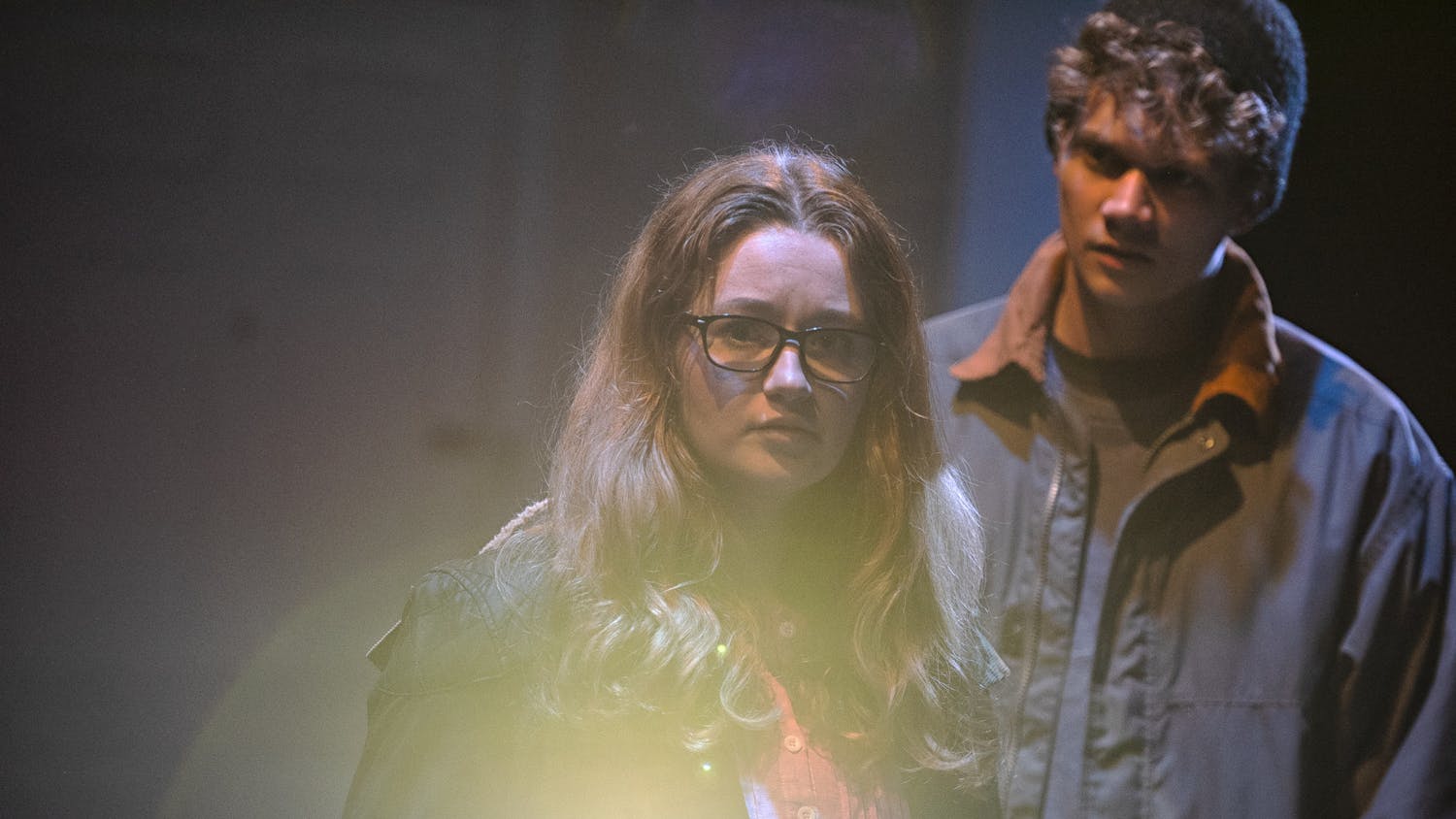Alright. Four guards patrolling the room to the right, one guard in an alcove to the left. Shoot forward and they’ll all come running. But I’m standing in a bottleneck, so I should be able to get all of them. Okay, let’s do th—
Shoot. Dead again. Okay, restart. Maybe I have to shoot and back away really quickly, and get the guards as they come around the corner. Yeah, that’ll wor—
Dead. Restart. Maybe I’ll just try charging forward and possibly get to that alcove—
Dead. Restart.
This is the brutal cycle that doesn’t easily let you go. This is the magnificence and the curse of no load times so you can just restart time and time again until you get through that difficult level. This is the formula that has made Hotline Miami such a hit.
And Hotline Miami 2 is more of this brilliant gameplay loop. The game resembles its predecessor in almost every way. The story is more ridiculous, the stages more trippy and technicolored. There’s a little more diversity to the enemies and how they present themselves. New characters give a little bit of a breath of fresh air to the series, as well, injecting a modicum of variety into a game which is otherwise nearly unbelievably repetitive.
Because this game is all about playing the same sequences over, and over, and over, until you can get yourself synchronized in such a way as to kill every enemy in the level before they can kill you. It’s a tall task, considering it usually only takes one hit to kill you and to put you back at the beginning of the floor. And yet, even though it can be frustrating, it still works. Its combat puzzles still suck me in, the stages are still mesmerizing in their art and design, forcing me to think through each and every step I take and bullet I shoot.
In a sense, it becomes a stealth-action game, but even that isn’t the right word.
It’s like a dance game. A rhythm game. In Hotline Miami 2, your goal is to perfect a certain pattern that will get you safely through the level. You become a choreographer, tracking how each move will affect the AI in the game. You have to jump forward and quickly jump back, or spin around in a circle while spraying bullets, or sprint into a room with crowbar drawn and dispatch the enemies before they can shoot you in the face.
It’s a beautiful, chaotic mess that forces you to find the order in the disorder. It teaches you to take it slow and to move elegantly and efficiently, wasting no ammo or motion.
And when you eliminate every single enemy on a floor of a stage, you can advance to the next part. You’re awarded with a moment of silence and solitude — and a level fully covered in blood and gore. Bodies strewn everywhere. Glass shot out. Destruction wrought on a scale that Hotline Miami trademarked.
However much I was entranced by the dance of Hotline Miami 2, I was turned off by its brutality.
Although the characters are only pixelated sprites, the animation of bullets ripping into them is still visceral and slightly revolting. Blood sprays out of each character to the point where nearly an entire stage can be painted in crimson. When you incapacitate a guard, you can reach down and break his neck or bash his face in.
These executions are over-the-top and gruesome in a way that I had never before thought possible in a game as abstracted from the real as Hotline Miami.
Hotline Miami 2, however, is not a game to present you with ethical dilemmas. It’s a game to crush them under the weight of repetition, gamifying murder until the characters aren’t anything more than automatic, motion-sensitive robots designed to prevent your progress. There’s no humanity in this game. Life means nothing. All considerations of morality are erased and buried under scores and times and attempts.
Except it’s not even that simple. In one level, you take control of a police officer who must knock out all of the enemies. When you kneel on top of a knocked-out guard to finish the job, the execution animation is extremely slow, as if the officer is actually reluctant to kill. It’s a small technical difference, one that most players will probably not be hung up on. But I cannot get the image out of my head of the officer slowly reaching down to murder the man underneath him. I fashioned a look of horror on my character’s face. It made me not want to kill him. It made me wonder why I was killing anyone in this game. It turned me off from killing in a game that’s about massacring entire houses full of people.
If that police officer level showed me anything, it’s that the game would be so much more palatable, and so much more moving, if it used that same reluctance to violence as shown by the police officer. It would effectively be an equivalent game, but you wouldn’t have to wade through the massive amounts of blood and death to get to the brilliant combat puzzles. Additionally, it would allow the character to have some sort of moral investment in the game. Hotline Miami 2 could provide an even more moving commentary about society and games if it let you not kill. If it made you take that extra step to murder, it would provide the sort of extra level of consideration that we ought to have — that we need to have — with regards to violence.
One Life Left: Hotline Miami 2
Comments



